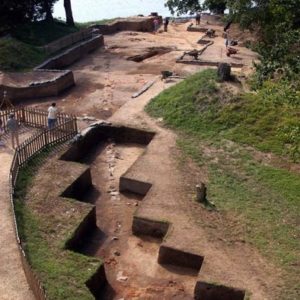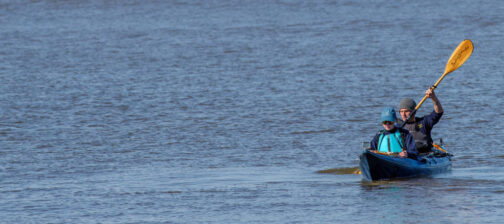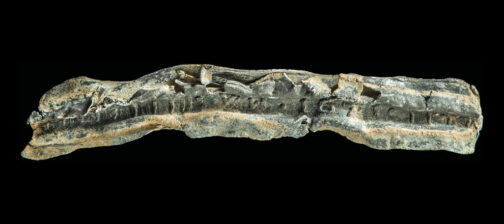“To every side, a proportioned distance from the palisado, is a settled street of houses that runs along so as each line of the angle hath his street. In the middest is a marketplace, a storehouse, and a corps du guard, as likewise a pretty chapel . . .” —William Strachey
Archaeologists recently discovered the end of the cobblestone foundation to a 167-foot-long building, known as structure 172, that may be similar to a London rowhouse or almshouse. They hope to finish defining the outline and interior of the building in a few weeks.
Based on the evidence so far, the building was 18 feet wide, a width that fits traditional Fort Period building dimensions, and was 10 feet away from and parallel to the west wall, the same as other earlier buildings inside the fort.
Archaeologists have also uncovered four H-shaped hearths inside the building that divide it into 8 to 10 chambers, and there may be another hearth near the center that has not been uncovered yet. Bermuda limestone found in one of the hearths indicates that the building was constructed after 1610 when a supply of colonists stopped there enroute to Jamestown.
The architecture in this area also appears to be very different from the earth fast mud and stud buildings found at the other end of the fort. Artifacts from the building site include a relatively high concentration of status items compared to other areas of the fort site such as broken Chinese porcelain, delftware wall tiles from the Netherlands, ceramics and glassware in the facon de Venise. This may indicate that people of relatively high status lived here, and it may also indicate a social class separation in the overall design of the fort.
Recently, archaeologists discovered the lens of a telescope in fill near the building. Personal objects such as a small silver wax seal with a scallop shell design, a silver putto, a crucifix made of jet, the cap of the handle of a small silver knife engraved with the initials FP and the date 1622, and other items such as buttons, aglets, oyster shells and food remains have also been found in this area.
related images
- Cobblestone foundation
- H-Shaped hearths inside buiding
- West bulwark and west palisade








